
Paul Gilbert, left, and Mary Charlton. (Iowa Starting Line graphic)
This story first appeared in the Sept. 16 edition of the Iowa Starting Line newsletter. Subscribe to our newsletter to get an exclusive first look at a new story each Tuesday in our The Hot Spot: Investigating Cancer in Iowa series.
Iowa is fourth in the nation for rates of alcohol-related cancers, and highest in the Midwest.
Most Iowans, it seemed, had read the grim statistics about our state’s high and rising rates of cancer, and probably weren’t surprised to hear Gov. Kim Reynolds talk about it in this year’s Condition of the State speech.
But many may have been surprised at what she chose to specifically call out: Alcohol.
“We’re also among the top for alcohol-related cancers, with the highest incidence in the Midwest,” Reynolds said during the January speech. “This month, the Surgeon General warned that alcohol is a known carcinogen.”
That warning came from a January report, “Alcohol Consumption and Cancer Risk,” finds evidence of a causal link between drinking alcohol and an increased risk of seven different types of cancer. It also recommends warning labels on alcoholic beverages that address the cancer risk.
But it’s a safe bet most drinkers haven’t heard of it.
“Only 40% of Americans are aware that alcohol has really any association with cancer,” Dr. Mary Charlton said in an interview.
Yet Iowa is fourth in the nation for rates of alcohol-related cancers, and highest in the Midwest.
That’s the reason Charlton, director of the Iowa Cancer Registry since 2020, made alcohol the focus of the 2024 Cancer in Iowa report, which predated both the governor’s and surgeon general’s warnings.
“Iowans’ alcohol consumption—in volume and frequency—is among the highest in the nation,” the report says. “The bottom line: The more alcohol a person drinks, the higher the risk of cancer.”
Bury the evidence
The surgeon general’s recommendation to add warnings to alcoholic beverage containers in 2024 was made by Dr. Vivek Murthy, a Biden appointee. But any changes to labeling would fall under the purview of Congress, which has so far refused to act on the matter.
If anything, the federal government under President Donald Trump is all but giving up on fighting cancer writ large—including downplaying the connections between alcohol and cancer.
The Trump administration has ended a yearslong government study begun in 2022 that had been examining links between alcohol, cancer, and other ailments in order to revise the US dietary guidelines.
Instead, the administration plans to drop any recommendations on alcohol consumption (currently 1-2 drinks per day) in its dietary guidelines, a gift to the multi-billion-dollar alcohol industry.
Paul Gilbert, who studies alcohol use disorders with the University of Iowa’s College of Public Health, and contributed research to the 2024 Cancer in Iowa report, said he’s concerned that scientific research is being buried.
“We’ve got this increasing level of cancers that’s cause for concern … and we know that we are traditionally a heavy drinking state,” said Gilbert, who now is on faculty at Santa Clara University in California. “If that doesn’t see the light of day, if that isn’t going to be published or widely known, that really hampers our overall understanding.”
How alcohol causes cancer
Seven types of cancer are identified with alcohol use:
- Mouth (oral cavity)
- Throat (pharynx)
- Voice box (larynx)
- Esophagus
- Liver
- Colon and rectum
- Breast
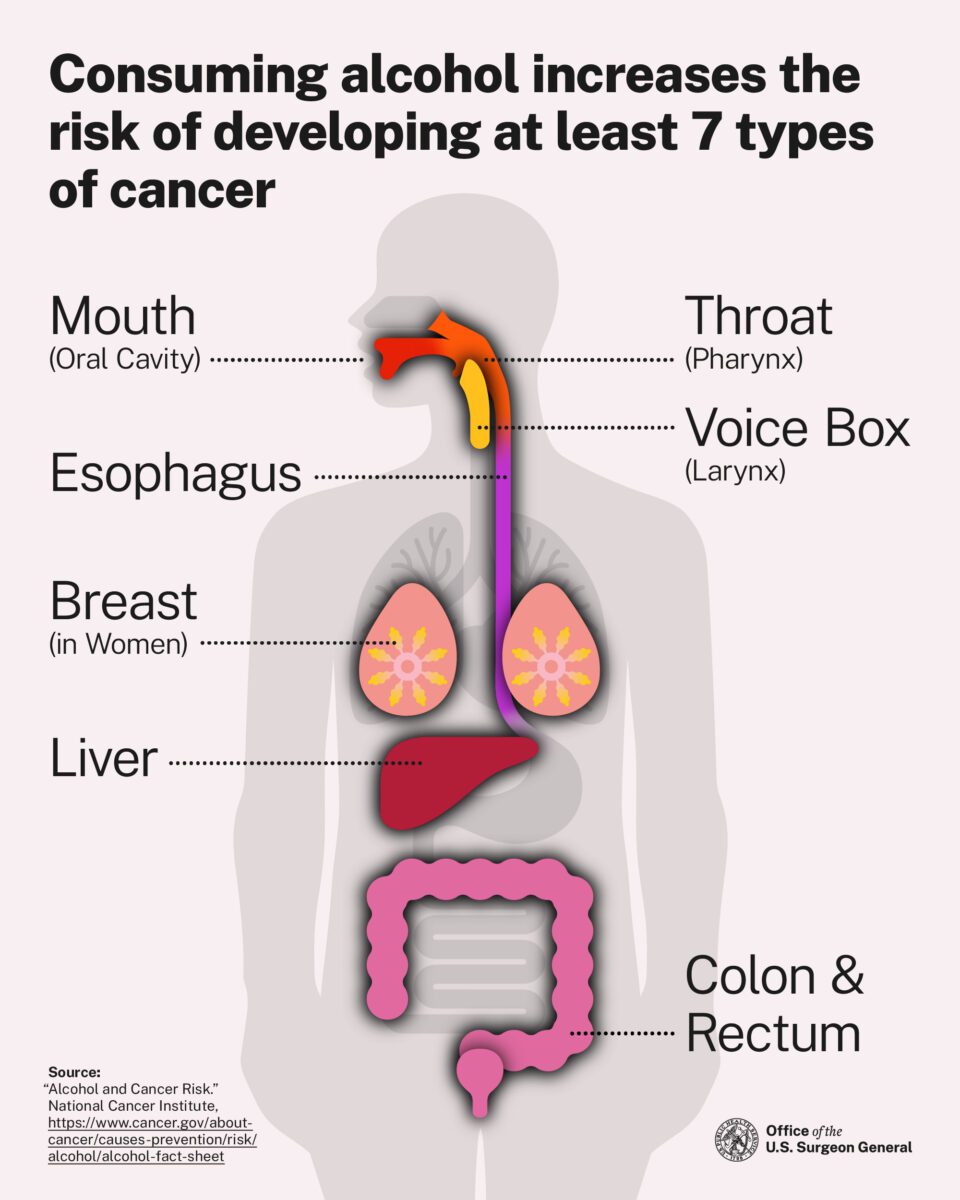
“It’s a causal connection, which is a big deal in science,” Gilbert said. “It actually is really difficult to establish a causal relationship in science. But there is clear and sound and high-quality evidence of a causal relationship between alcohol and seven different cancers.”
Alcohol causes cancer in at least four ways:
- It breaks down into acetaldehyde, damaging our DNA, which causes mutations that can lead to cancer;
- It induces oxidative stress, damaging DNA, proteins, and cells, and causing inflammation;
- It alters hormones, including estrogen, which contributes to an increased risk of breast cancer specifically;
- It allows other carcinogens, like tobacco smoke, to be more easily absorbed by the body.
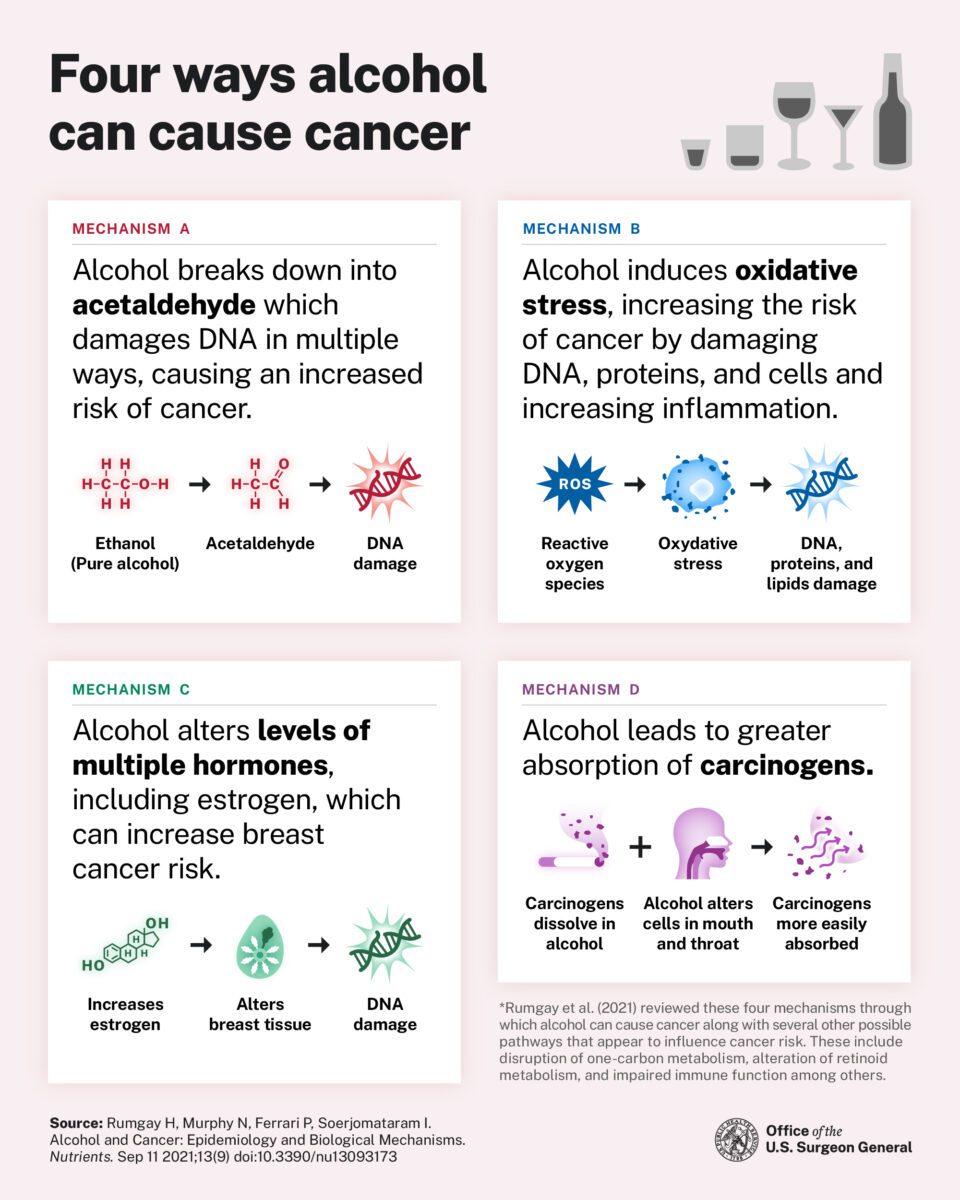
“It starts at probably lower levels than we expected,” Gilbert said. “And it increases with each amount of alcohol consumed.”
Just like many Iowans aren’t aware of radon’s cancer-causing dangers, people don’t connect their drinking to cancer either.
“The knowledge in the general public has always been pretty low,” Gilbert said. “Especially in the last few years, I think there’s been more effort to just spread the word, make sure people know, so that they make well-informed decisions.”
Highest rate of binge drinking in the nation
John Stokes of Iowa City didn’t know the connection either.
A two-time cancer survivor and recovering alcoholic, he only heard his drinking may have caused his larynx cancer during a conversation with his doctor—saying it was “really an ‘ah-ha’ moment.”
“As a head and neck cancer survivor, I want to make sure that Iowans know that alcohol can cause cancer,” Stokes said at a news conference for the Iowa Cancer Registry’s 2024 report. “And if you’re thinking about making the move to drink less, reducing your chance of risk is a great motivation itself.”
Around 20,000 Americans die of alcohol-related cancers each year. That’s far higher than the 13,500 who die in drunk-driving crashes.
Yet drinking socially is the norm in states like Iowa, which has the highest rate of binge drinking in the nation: 22.5% of Iowans are binge drinkers, defined as having had more than four drinks (five for men) during one occasion. (North Dakota is a close second place, at 22.4%.)
“You can get alcohol everywhere; it’s cheap, it’s widely available. Get it at any Casey’s, any Kum & Go,” Gilbert said.
And the highest rates of binge drinking occur among people with higher incomes and higher education.
“I think it’s really hard in our culture, particularly here in Iowa,” Charlton said. “I generally kind of start with the message like, just anything you can do to reduce your intake is a step in the right direction.”
Even Charlton, knowing what she knows, doesn’t abstain from alcohol either. She said, even at conferences with other cancer researchers who know the risks, social drinking is still the norm.
But she’s trying to be better.
“Sometimes I would have a glass of wine when I was doing email at night,” but she noticed she wasn’t “getting any social benefits of that; it’s only increasing my risk for cancer.”
Instead, she has a new rule for herself: “I never drink alone. If I’m going to have some drinks, I’ll do that in the company of friends, and I’m going to try and minimize the amount that I drink.”
Support Our Cause
Thank you for taking the time to read our work. Before you go, we hope you'll consider supporting our values-driven journalism, which has always strived to make clear what's really at stake for Iowans and our future.
Since day one, our goal here at Iowa Starting Line has always been to empower people across the state with fact-based news and information. We believe that when people are armed with knowledge about what's happening in their local, state, and federal governments—including who is working on their behalf and who is actively trying to block efforts aimed at improving the daily lives of Iowan families—they will be inspired to become civically engaged.


We sent Iowans nitrate tests to check their water. Here’s what they found
This story first appeared in the Sept. 30 edition of the Iowa Starting Line newsletter. Subscribe to our newsletter to get an exclusive first look...

How can policymakers help reduce Iowa’s cancer rates?
This story first appeared in the Sept. 23 edition of the Iowa Starting Line newsletter. Subscribe to our newsletter to get an exclusive first look...
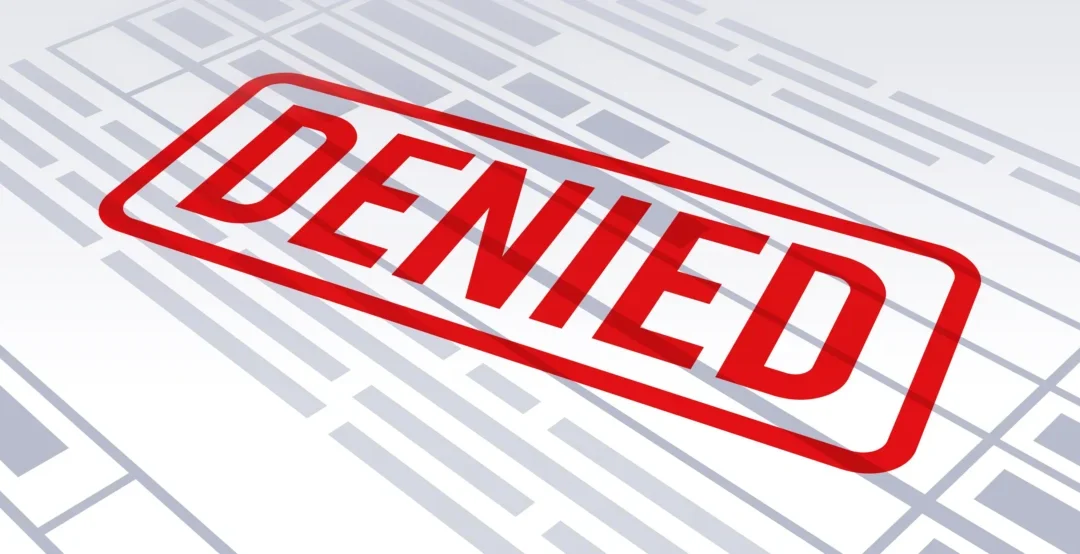
Fighting a health insurance denial? Here are 7 tips to help
By: Lauren Sausser When Sally Nix found out that her health insurance company wouldn’t pay for an expensive, doctor-recommended treatment to ease...
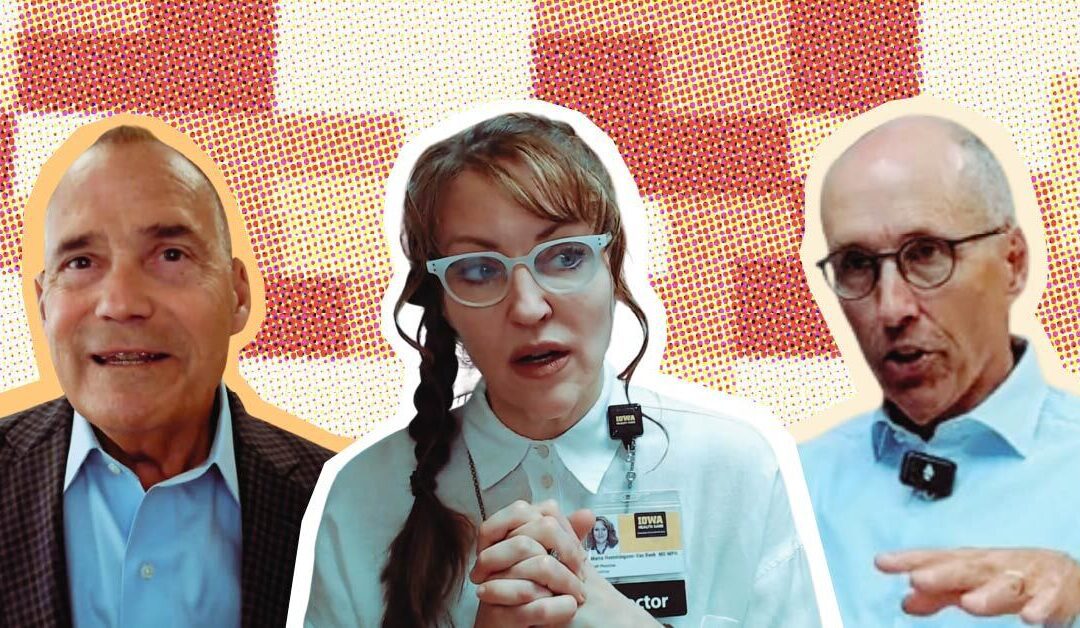
What you can do to reduce your cancer risk: The big six for Iowans
A version of this story first appeared in the Sept. 9 edition of the Iowa Starting Line newsletter. Subscribe to our newsletter to get an exclusive...
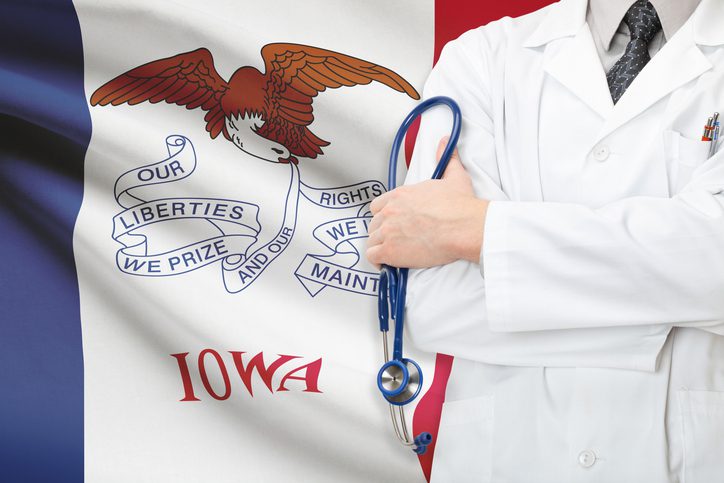
OPINION: As a future pediatrician, I shouldn’t be preparing for diseases from the past
As an Iowan, I've always been drawn to helping people. Growing up “Iowa nice” transformed into a desire to become a pediatrician, connecting with...

Radon exposure is fueling Iowa’s deadliest cancer
This story first appeared in the Sept. 2 edition of the Iowa Starting Line newsletter. Subscribe to our newsletter to get an exclusive first look at...






